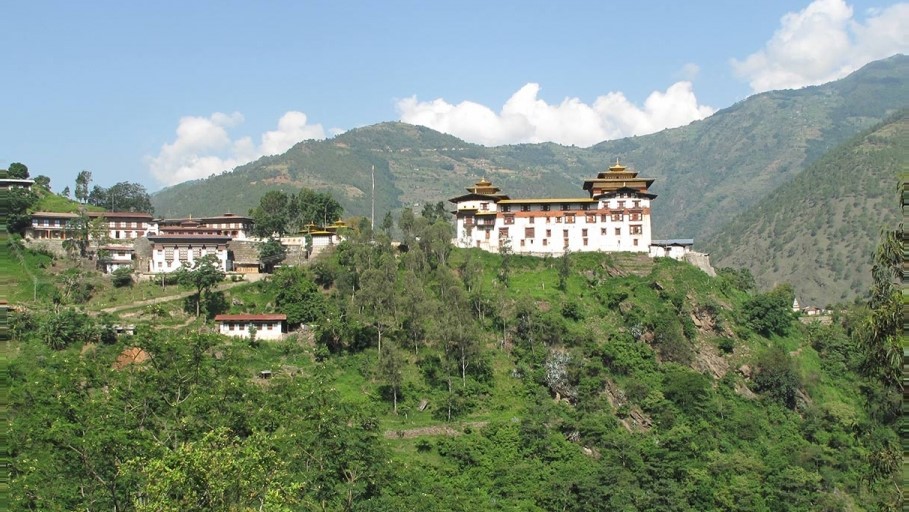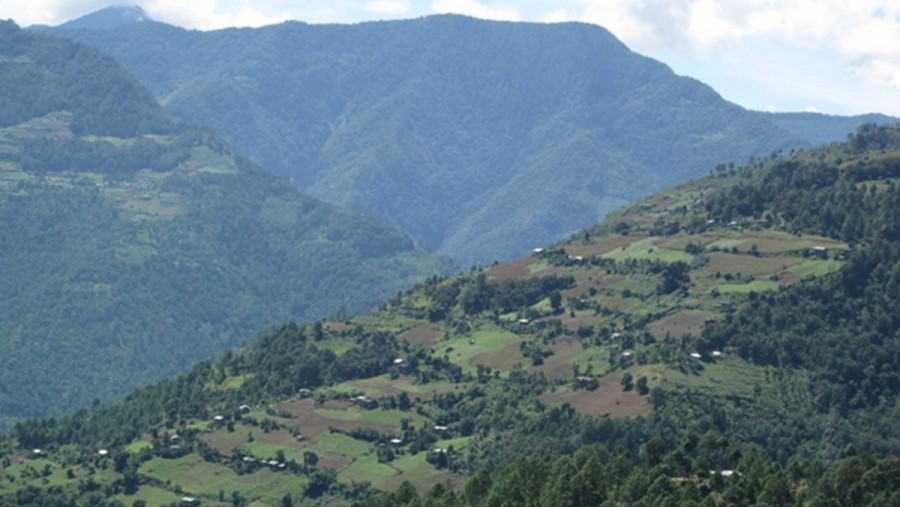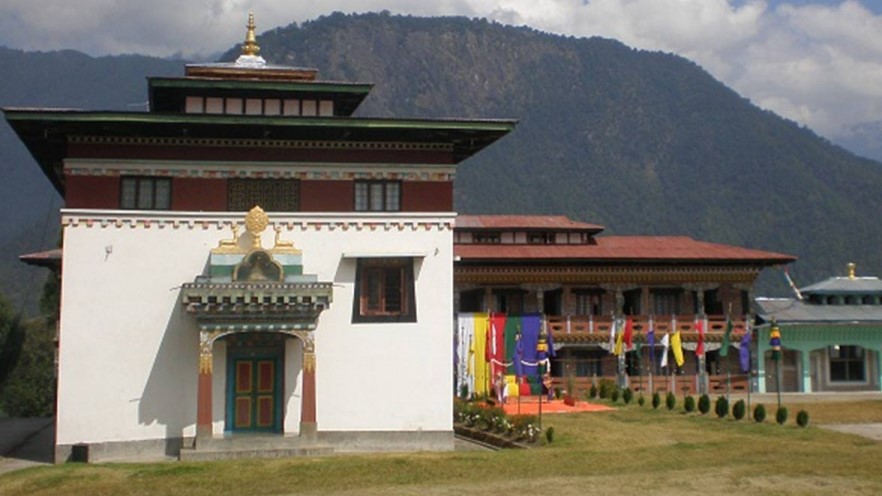Rangjung Woesel Choeling Monastery is located in Eastern Bhutan under Trashigang district at Rangjung. The monastery was founded by His Eminence Dungsey Garab Dorje Rinpoche in the year 1989 with few monks and nuns. The objective of monastery is to provide a conducive haven for the study of Buddha dharma as expounded in the Dudjom New Treasure Lineage and carry out dharma activities for the benefit of the Buddhist community in and abroad the country. It has a flourishing community with branches monasteries and retreat centers.
Rangjung Woesel Choeling Monastery traces its roots to the Gelong Gonpa which was established by Rinpoche and H.H. Dungse Thinley Norbu Rinpoche. Gelong Gompa is situated in a mountainous region which takes a day to reach it either on foot or on horseback. It has always been the aspiration of the Bhutanese to have Dudjom’s family lead the dharma practice.
After H.H. Dungse Thinley Norbu Rinpoche departed from Bhutan, the Bhutanese fervently requested Rinpoche to remain and turn the dharma wheel of Dudjom New Treasure Lineage in the monastery. Rinpoche, realizing the deep faith and genuine devotion of the Bhutanese, accepted the heavy responsibility to continue the dharma activities and welfare services for the Buddhist fraternity living in and around the monastery.
During the time of the establishment of Rangjung Woesel Choeling Monastery, Rinpoche was still pursuing his studies in H.H. Penor Rinpoche’s and Mindroling Monasteries in India. For four years, rinpoche spent all his winter holidays working incessantly, carrying out dharma activities for the monastery. At that time, there were only a handful of ordained monks and nuns in the monastery. Owing to the limited access to transportation in the monastery, a piece of strategic land was offered to Rinpoche. Nevertheless, due to financial constraints encountered at the initial stage, only bamboo huts were built and the monks and nuns survived on alms.
A few years later in 1993, the number of nuns increased to the extent that a separate nunnery had to be established in Radhi, Pakaling which is a few kilometers away from the monk’s monastery. Thereafter, Rinpoche has been exploring for sponsors from abroad. With the blessings of the Buddha and the kind assistance and contribution from donors and supporters, Rinpoche successfully constructed a larger monastery to cater to the needs of the monks and nuns.
The neighborhood of the monastery is poor yet religious. Many wish to send their children for monastic education in India and Nepal but they cannot afford to do so. Due to poverty and lack of support from the family, they often request enrollment for their sons at the monastery. However, with the exponential growth of the number of monks and nuns, rinpoche has started to control the admission of monks and nuns. This is due to the inadequacy of hostels, classrooms, teachers and the ever increasing expenditure.
In 1993, the number of nuns increased to the extent that a separate nunnery had to be established in Radhi, Pakaling which is 12 kilometers away from the Rangjung monastery. Thereafter, Rinpoche has been exploring for sponsors from abroad. With the blessings of the Buddha and the kind assistance and contribution from donors and supporters, Rinpoche successfully constructed a larger monastery to cater to the needs of the monks and nuns. At present there are over 300 monks and nuns studying in the monasteries.





